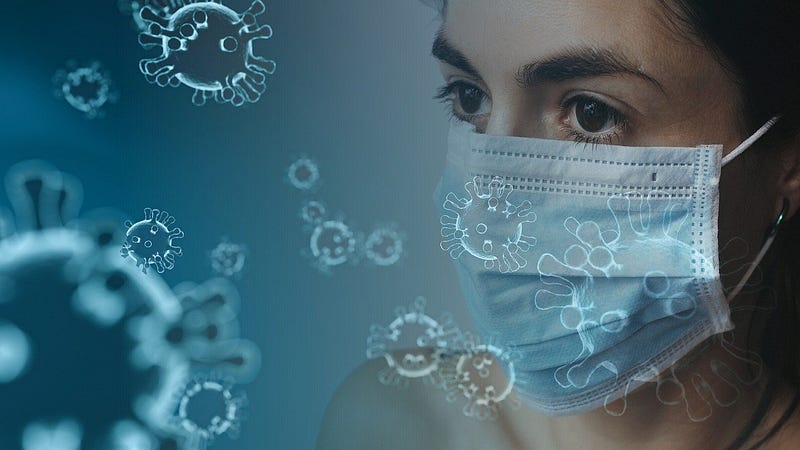The Importance of Masks in Combating COVID-19: A Comprehensive Guide
Written on
Chapter 1: Understanding Mask Usage
Masks play a significant role in reducing the spread of respiratory viruses, but they do not completely eliminate transmission. My visit to China revealed that wearing masks in public is a common practice, especially in countries that have effectively curbed the spread of COVID-19. In contrast, mask-wearing in the United States has been less prevalent. Given the rapid increase in COVID-19 cases globally and particularly in the U.S., the question arises: Should we adopt mask usage more widely here?
As of April 2, 2020, the CDC recommended mask use primarily for individuals displaying symptoms or those caring for symptomatic individuals. However, due to a scarcity of surgical and N95 masks, it is crucial that healthcare professionals receive appropriate protective gear.
On April 3, 2020, the CDC expanded its guidance, advising the public to wear cloth face coverings in settings where social distancing is challenging, such as grocery stores and pharmacies, particularly in areas with significant community transmission. This recommendation is grounded in evidence showing that asymptomatic individuals can still spread the virus. Thus, wearing a mask can help reduce the likelihood of an infected person transmitting the virus to others.
Research suggests that even homemade masks can significantly decrease the social transmission of respiratory viruses. SARS-CoV-2, the virus responsible for COVID-19, is a respiratory pathogen, and studies have indicated that simple homemade masks can lower the number of microorganisms released during a cough. Making a mask at home requires minimal materials, such as a T-shirt, paper towel, and safety pin. There are also no-sew options utilizing hair bands and a bandanna or handkerchief. While these homemade masks are not as effective as surgical or N95 masks, they can still provide some level of protection.

Nonetheless, both surgical and homemade masks cannot fully prevent infection; therefore, social distancing and isolation remain essential for controlling the virus's spread. It is critical to continue practicing social distancing, remaining at home, and testing and quarantining individuals who are infected or suspected of being infected.
While a homemade mask may create a false sense of safety, it is essential to behave as if you're not wearing one. Limit outings to necessary trips, maintain distance, minimize conversation, and wash your hands upon returning home. When removing a homemade mask, do so cautiously, treating it as potentially contaminated. Wash it thoroughly in warm, soapy water and sanitize your hands afterward.
In fact, I find that avoiding conversation in public spaces is a practical approach to minimizing risk. While it’s impossible to stop breathing, refraining from talking can significantly reduce the inadvertent release of virus-laden droplets, especially if one is asymptomatic. Additionally, it lowers the chances of inhaling droplets released by others, as the mouth is a larger target than the nostrils. The main modes of transmission in public spaces include droplet exposure and contact with contaminated surfaces. Therefore, it’s vital to maintain distance, limit conversation, and avoid touching your face.
Section 1.1: Supporting Evidence for Mask Usage
A number of studies support the efficacy of masks in interrupting the spread of respiratory viruses. Notable research includes:
- Jefferson et al., "Physical interventions to interrupt or reduce the spread of respiratory viruses," Cochrane Database of Systematic Reviews, 2011.
- Davies et al., "Testing the Efficacy of Homemade Masks: Would They Protect in an Influenza Pandemic?" Disaster Medicine and Public Health Preparedness, 2013.
- Einav, "Stealth Transmission of COVID-19 Demands Widespread Mask Usage," Medscape, March 2020.
Section 1.2: Critiques of Mask Usage
Conversely, there are arguments against widespread mask use, such as:
- Brosseau et al., "Masks-for-all for COVID-19 not based on sound data," Center for Infectious Disease Research and Policy, April 2020.
Chapter 2: DIY Mask Making
For those interested in creating their own masks, there are numerous instructional videos available.
The first video titled "Mayo Clinic Minute: Study shows masks can prevent COVID-19" provides insights into the effectiveness of masks.
Additionally, the second video, "How face masks work to protect you and others from COVID-19," explains the protective mechanisms of masks.
Finally, for more guidance on mask-making, check out these videos: